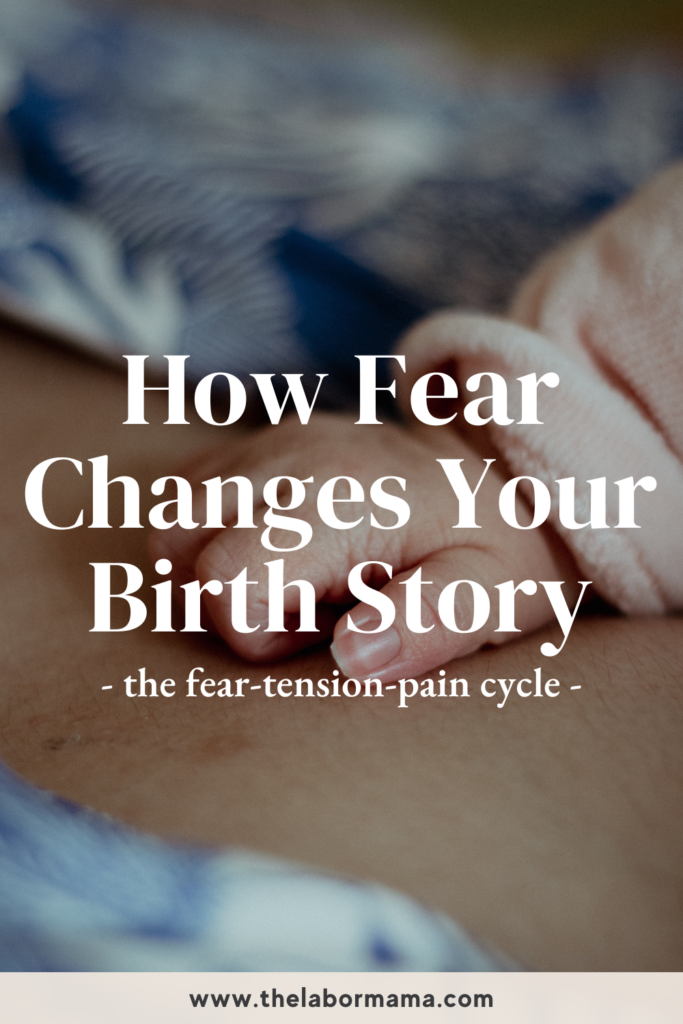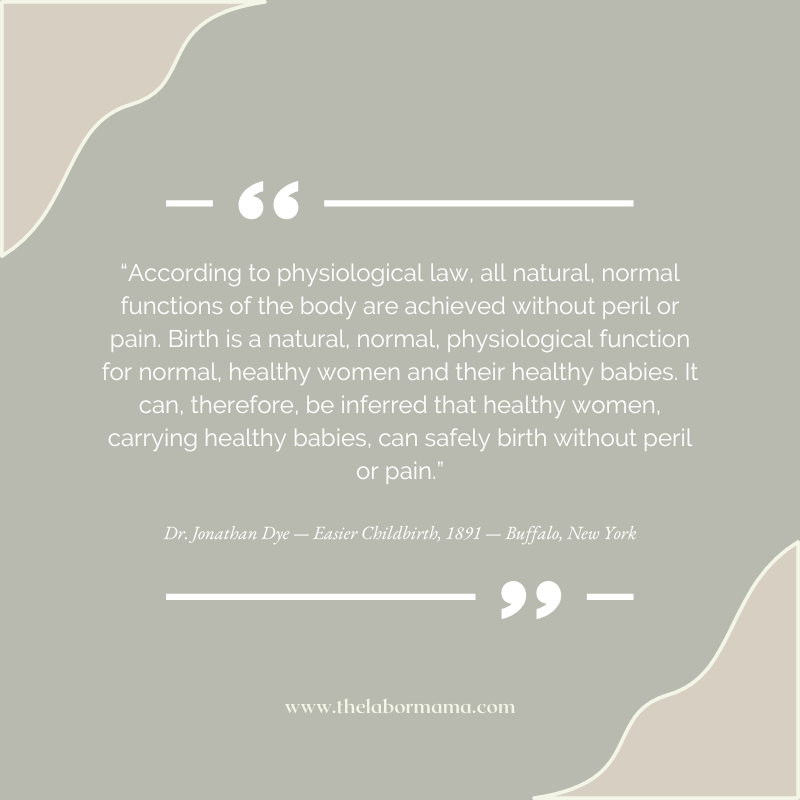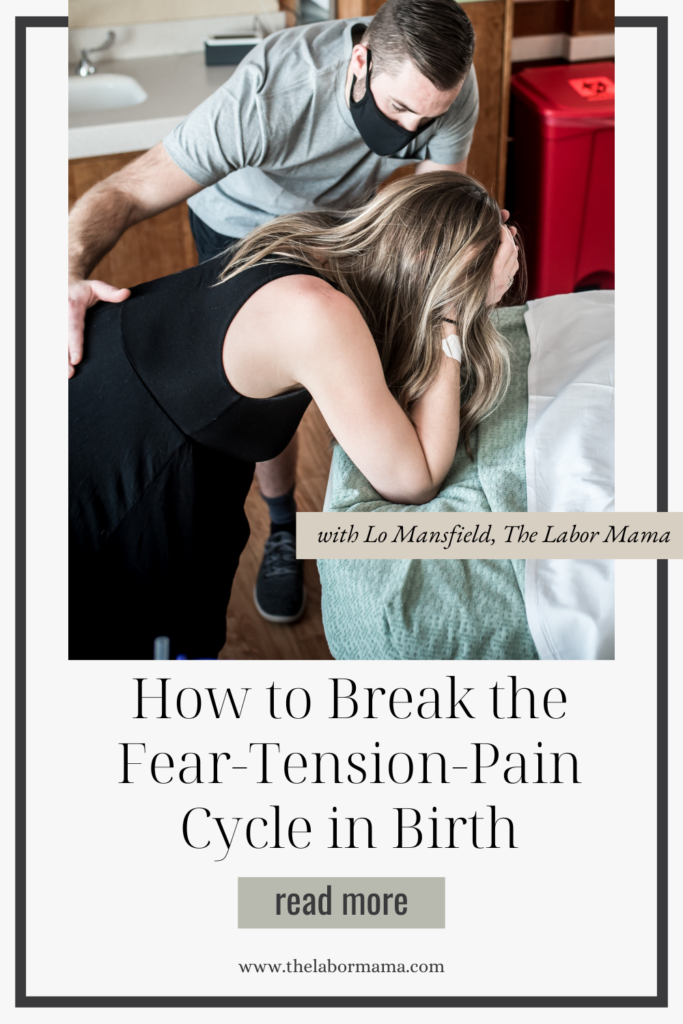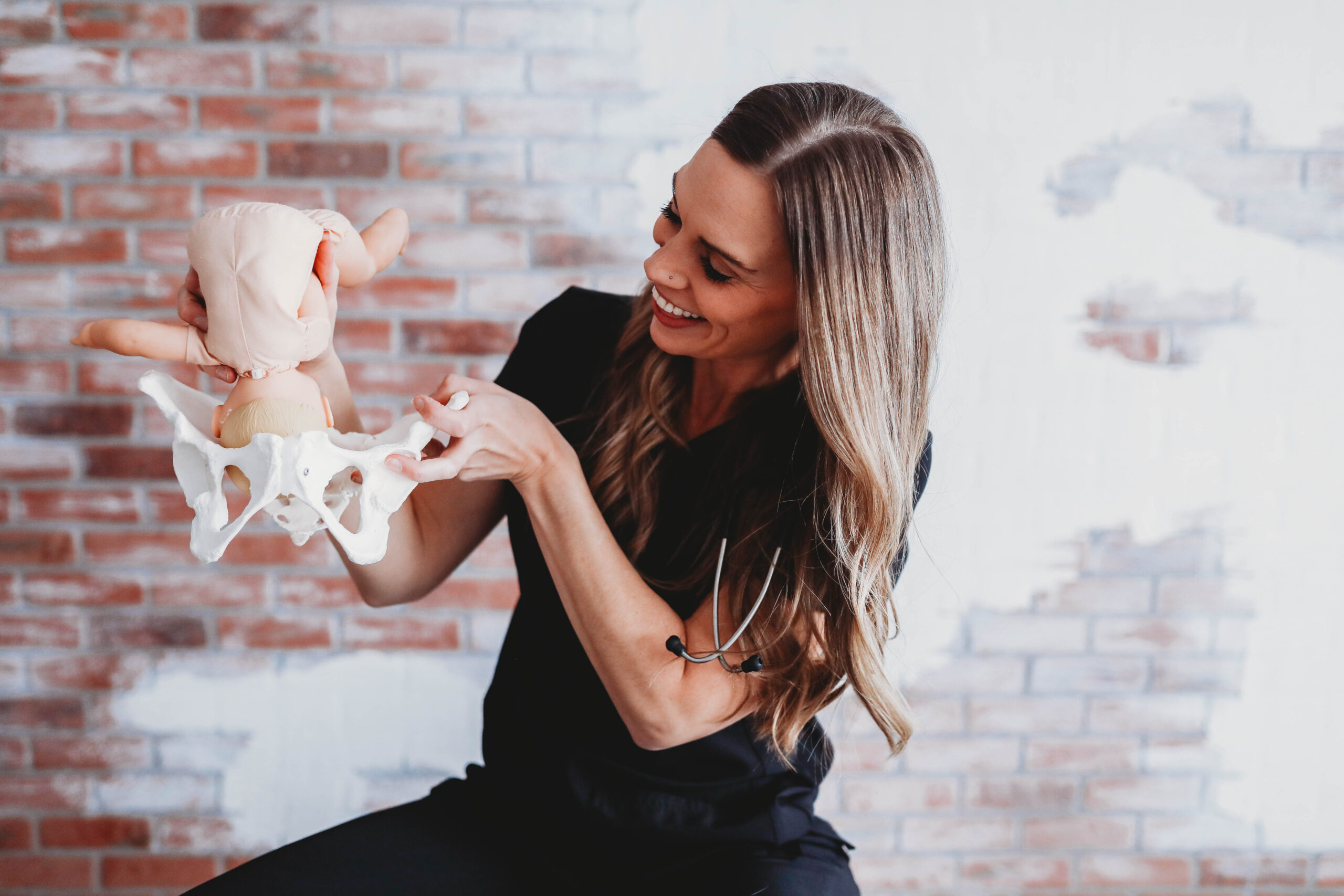When I talk to a mama about how she is feeling as her birth approaches, I usually get a lot of answers. There’s excitement. Joy. Fear. Worries about other children, labor pain, and sleepless nights. And honestly? It all makes sense. To have a child and to become a mama (whether it’s your 1st or your 6th) is a life-changing experience each time. I think it makes sense that we give this monumental change the respect and reverence it deserves.
If I could steal back one emotion from you though – it’d be that fear. Especially fear about childbirth. Though labor and birth are processes that can seem scary and uncontrollable, fear about them that is not “managed” can have significant impacts on both body and mind – and ultimately, on the birth experience itself.

Who is The Labor Mama and Why Am I Here?
Hey friend! I’m Lo – also known around here and social media as The Labor Mama. I’ve spent my nursing career in labor, delivery, and postpartum, have birthed 3 of my own babies, have labored thousands of mamas at the bedside, have taught hundreds of students online, and have even delivered a few speedy little babies with my bare hands (oops).
Here at TLM, I offer online birth classes to empower you the way everyone should be. The education + support I offer gives you experience, evidence, and empathy; you’re getting all of my years of “clinical” RN knowledge, beautifully combined with my real experiences as a mama and a nurse. These are not your hospital birth classes (those won’t do it, I promise), and honestly, birth doesn’t follow a textbook or protocol anyway – you need to know so much more than that.
If you want to connect with me further, head to Instagram. There are hundreds of thousands of us over there learning together daily.
What is the fear-tension-pain cycle?
Ok, so what is the fear-tension-pain cycle? Some also refer to this as fear-tension-pain syndrome, but I think it’s best to think of it and learn about it as a cycle – because that’s what it is! The fear-tension-pain cycle is actually directly connected to our nervous systems. When you are hurting or scared of something, your body naturally kicks into a “fight or flight” response. This is a protective mechanism that is actually really good in most circumstances, because it encourages you to remove yourselves from dangerous or unhealthy situations. When you are in fight or flight mode, a few different things can happen.
What flight mode may cause:
- Increases in adrenaline
- Rerouting of blood to “essential” organs
- Increase in respirations and heart rate
What fight mode may cause:
- Increase in tension related to the “threat” (of labor pain)
- Clenched jaw, tight fists, tight shoulders
Do you see where I am going with this as it relates labor? As contraction intensity increases, many start to feel a little fearful about the next one. “Can I do it?” “What if it’s worse?” “I don’t think I can do another hour of this.” As this fear creeps in, our body sneaks into fight or flight. Our breaths may get rapid and shallow, our pulse changes, we clench our jaws and our fists waiting for the moment of pain. Then, the contraction inevitably shows up, and it IS more painful because of all of the tension we are holding in our bodies. Our fears are then confirmed because there was more pain felt – and the cycle begins again.

Where did the fear-tension-pain cycle come from?
Interestingly, the fear-pain-tension cycle was first discovered relating to some research on the differences in labor pain and outcomes as they relate to socioeconomic status. The two obstetricians doing this work found that those who were less affluent and less educated actually felt less pain in labor and had better outcomes. Their conclusions were that those who were less educated had less fear around the process – and it led to greater pain control, less complications, and better outcomes.
Why does the fear-pain-tension cycle matter?
Ok, great. More fear = more pain. You got it – but what else should you know? The fear-tension-pain cycle can actually do more than cause you more pain. It can also slow down or stall labor as well. Recall how I talked about fight or flight mode. Remember how the body causes the blood to move to “more important” organ systems? Guess what isn’t consider “important” in these moments? The uterus! Some believe that fight or flight mode actually causes less blood flow to the uterus. This can then diminish the contraction strength or frequency.
If a stalls or slowdown does happen, it can become another mental block to overcome. Sometimes, these moments plant the seed of the “I’m not capable of doing this forever” fear. You can see how you can again become trapped in the cycle.
How do you interrupt the cycle?
Ok, let’s get to the good stuff. Fear is normal. Fear can be healthy. And honestly, I think it makes perfect sense to expect fear to sneak up on you a bit during your labor and birth process. So, what can you do to make sure when fear shows up, you can push back before getting caught in the fear-tension-pain cycle?
4 tips to break the cycle
Education: This one feels a little odd to suggest when you think about that early research that says education can lead to more fear. But, I believe it’s very important to learn as much as you can about what could happen, what your body (and baby’s) are doing, what may be suggested as a plan of care, or what conversations you might hear. This knowledge allows you to say “ok, I know what this is, I know what’s going on, and I have tools to participate or push back.” Will this make all pain go away? For most of us – no. But I think education makes things familiar – and familiar is naturally something that we fear less.
Environment: Research has shown time and time again that the birth environment plays a big role in you feeling safe. When you are safe, you are less fearful. Another bonus? Feeling safe leads to more oxytocin (yes, please). Consider who is in your space, what sounds you hear, what you smell, what the lighting is like, and what you’re wearing. If something is bothering you, ask about it being removed, changed, turned off, etc. Your space matters!
Birth support: A good birth support team should know your wishes and your fears. They can help you create the environment you want and recognize tensions. They can also see when you are slipping into the fear-tension-pain cycle. If so, they can help you correct course, “minimize threats” in your space, and give you the freedom to focus on your task – your birth!
Birth affirmations: This is something you can say, either internally or out loud, that encourages you in what you are feeling and the goal that you are working towards. Many find that structuring their breathing around their affirmations is really helpful. Pro tip: breathing is an AH-MAZING way to correct that fight or flight response. Affirmations are also a great resource for your birth partner, doula, or team. They can remind you of them when you aren’t able to remember them yourself.

the takeaway on the fear-tension-pain cycle
I’m not sure I totally agree with Dr. Jonathon Dye (one of the OBs involved in that research I mentioned) – can I say that? But, I do think that we can lean into the idea that birth is “normal” – that it is NOT a perilous situation.
If you do feel a level of fear right now about your upcoming birth, I actually want to say ‘that’s okay!’ It makes perfect sense to me. But, I would urge you to dig into those fears. Learn about them. Discuss them with your provider. Walk through them with your support team. If you end up meeting the source of that fear in your story, I hope your learning allows you to look at it and say “hey, I know you. I’ve learned about you. I know what’s true about you. And I know how I’m going to work through you.” Go get it, mama.
Were you fearful headed into your birth? Do you remember a specific reason why? Did anything help? I’d love to hear about it. xx- Lo

More resources (and freebies!) for you to take a peek at:
- Comprehensive Birth Plan and Birth Priorities templates
- A complete Third Trimester Checklist
- The RN + mama of 3 Ultimate Packing List
- The Labor Mama online birthing classes for every family
A note: This post may include affiliate links. This means if you make a purchase after clicking a link, I will earn a small commission (thank you)! Rest assured, this comes at no additional cost to you. You can read TLM’s full disclosure here.




